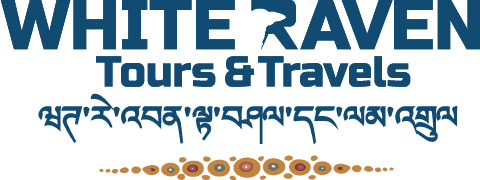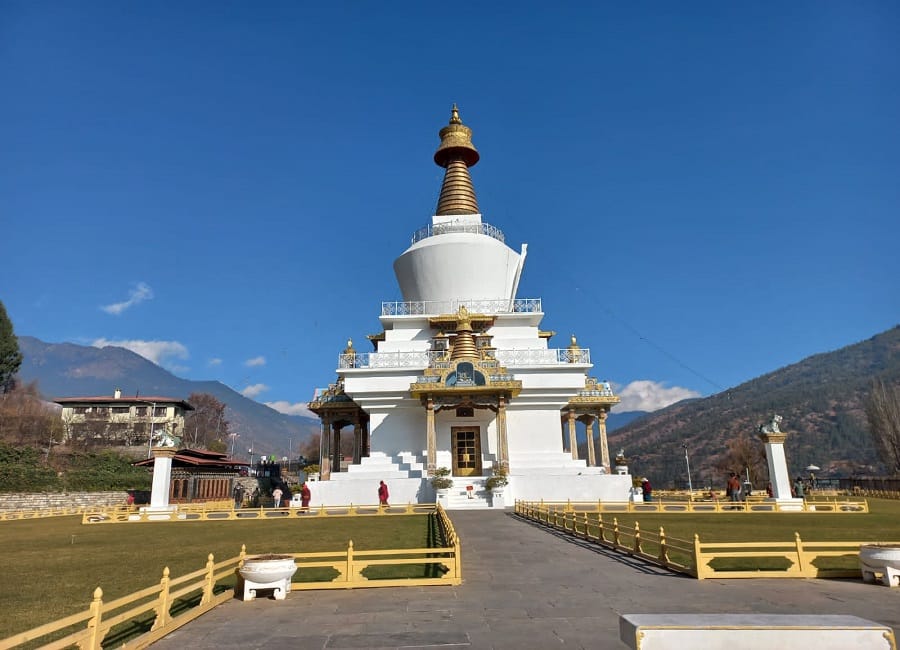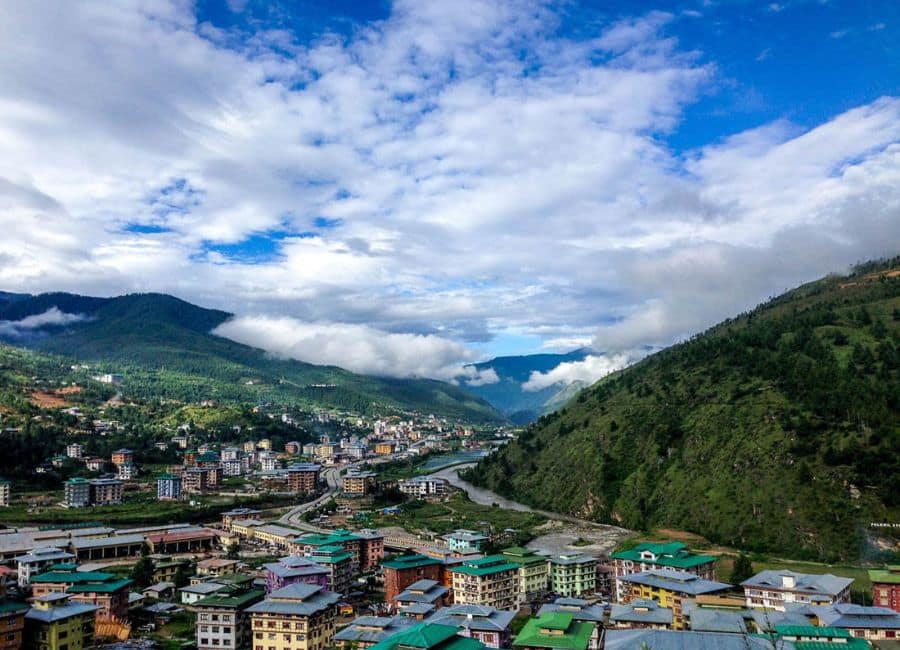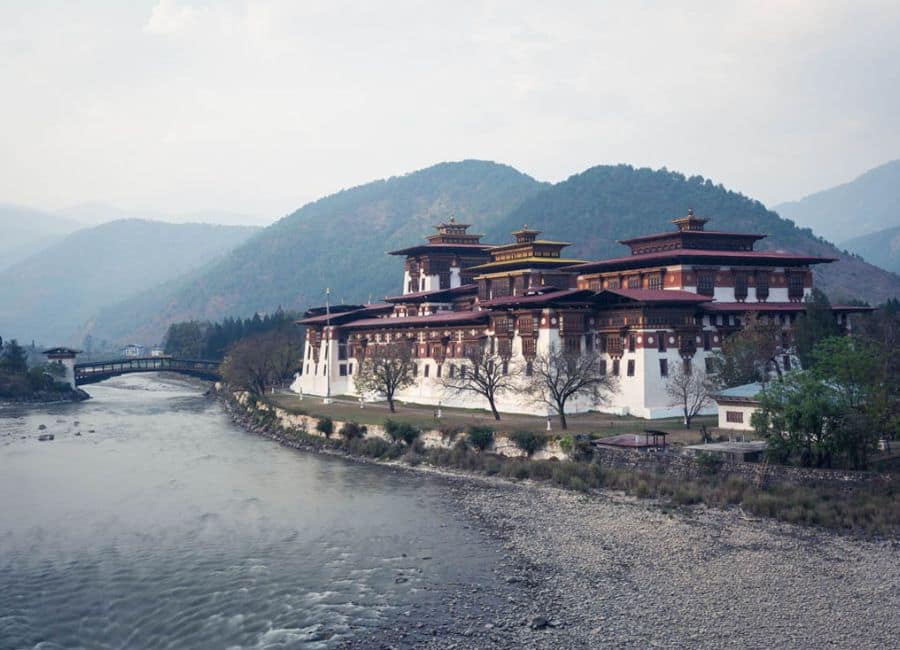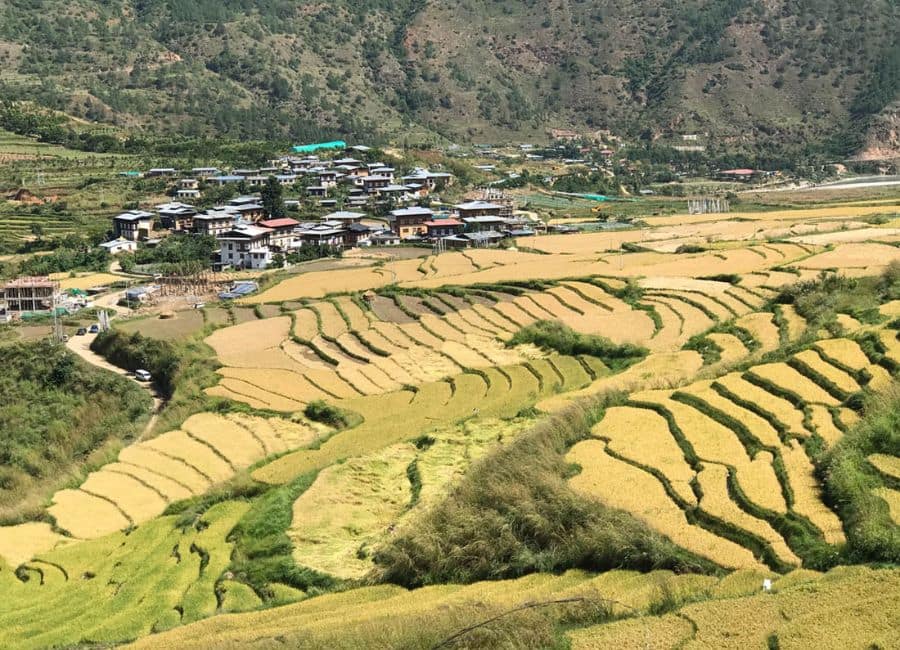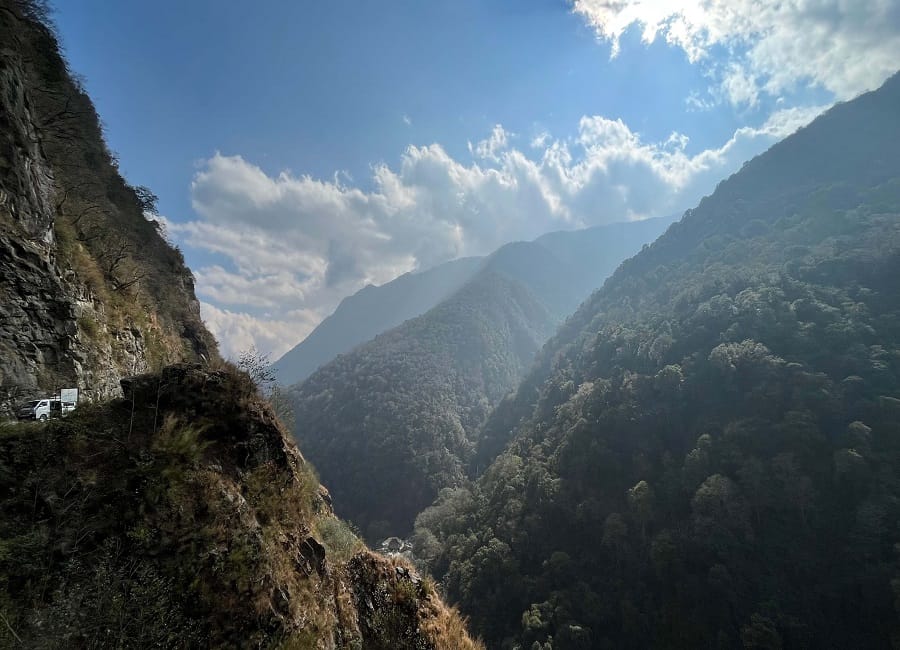Contact Us: +975- 17920418/17857895/77397369
PUNAKHA
Punakha valley is a 2-3 hour drive from Thimphu. On your way to Punakha, you will cross the Dochhula pass (3,140m) with a panoramic view of the beautiful snowcapped Himalayan range. The drive is very enjoyable with Rhodendrons blooming on either side of the road, lush green forests, sound of birds singing and a visit to the Royal Botanical Park on the way. Punakha is warmer than Thimphu or Paro with one of the most fertile land, producing organic crops, fruits and vegetables all year round. Once in Punakha you will see the magnificient Punakha Dzong, considered to be one of the most beautiful Dzongs in all of Bhutan, located alongside the Mo Chhu(Mother River) and the Pho Chhu(Father River). Guests often go for the white water rafting along the Dzong and spend the night in a camp,with bonfires and picnic, dancing to Bhutanese songs along with the locals.
Punakha once served as the capital for over 300 years and coronation ceremony of the first King of Bhutan, His Majesty, Sir Ugyen Wangchuck was done here in 1907. Like most parts of Bhutan, Punakha is also home to quite a few prominent monasteries.
PLACES TO VISIT IN THIMPHU
Welcome to the enchanting realm of Punakha Dzong, a masterpiece nestled at the confluence of Bhutan’s majestic rivers, Pho Chhu and Mo Chhu. As if painted by the divine, this valley cradles the convergence of these two great waterways, where the Punakha Dzong stands in all its glory. But it’s not just a marvel of architecture; it’s a repository of history and spirituality.
Within its sacred walls, the Punakha Dzong guards the earthly remains of Zhabdrung Ngawang Namgyal, the visionary unifier of Bhutan. A treasure beyond measure resides here too – the Ranjung Karsapani, a relic that emerged as Avalokiteswara, the embodiment of compassion, from the ashes of Tsangpa Gyarey, founder of the revered Drukpa School.
October 13, 2011 etched a fairy tale into Bhutan’s heart – the union of King Jigme Khesar Namgyel Wangchuck and Jetsun Pema. This monumental event unfolded within the embrace of Punakha Dzong’s sacred walls, casting an enduring spell of love.
Feel the rhythmic heartbeat of tradition at the annual Punakha Tshechu, a vibrant festival that graces the courtyards of this grandeur. A celebration that weaves spiritual devotion with colorful dances and rituals, a true immersion into Bhutan’s rich culture.
And oh, Punakha’s embrace comes with a climate that’s a gentle caress. With winters that cradle you in warmth and summers that kiss your skin, this valley rests at an elevation of 1200 meters above the sea’s embrace. Here, nature’s canvas is painted with rice, the region’s crowned jewel and prime cash crop, thriving under the tender touch of favorable climatic conditions.
Punakha Valley – where rivers whisper legends, Dzong’s walls hold secrets, love finds its royal abode, and every year, a festival paints the sky with vibrant strokes. Discover this haven, where nature, history, and tradition waltz in harmonious symphony.
In the heart of Punakha, two river titans – Pho Chu and Mo Chu – await your daring spirit. But listen closely, for among these rushing waters, Mo Chu emerges as the trailblazer’s choice, a serene siren calling out to first-timers, kids, and those seeking a more gentle thrill.
Mo Chu River – oh, it’s no ordinary stream. It’s your passage to the wild side, where adventure wears a calming grin. Feel the rush of anticipation as you set foot on the riverbank. The currents, like a well-choreographed dance, carry you on a journey that’s both exhilarating and tranquil.
Buckle up, because this is no ordinary rafting escapade. Mo Chu’s waters, though tamed, still hold secrets. They embrace you with a caress, letting you taste the excitement without overwhelming your senses. The rapids here are like mischievous companions – spirited, but not recklessly wild.
As you navigate these spirited waters, a panorama unfolds that belongs to dreams. The Punakha Dzong, standing tall and proud, watches over this aquatic spectacle. The rivers and valleys paint a vibrant canvas that only the brave get to witness from this unique vantage point.
And in the midst of it all, the Mo Chu River offers an invitation, a promise of an experience that’s not just about thrill-seeking. It’s about capturing moments of serenity while adrenaline courses through your veins. It’s about finding your balance in the midst of excitement.
So, dear adventurer, heed the call of Mo Chu. Let its gentler rapids be your guide into the heart of Punakha’s untamed beauty. Ride the waves, embrace the views, and let the river’s whispers of adventure echo in your spirit long after you’ve left its shores.
Rafting Stretch and Duration: 5.6 miles comprising of 10 rapids, 1.5 hours
This is the second-longest suspension bridge in Bhutan, Perched over the Mo Chhu and Pho Chhu (river) and is about 160-180 meters in length, connecting Punakha valley to the local villages nearby .The Bridge is covered with prayer flag offerings on both sides and makes a perfect spot photography.
Also known as the “Fertility Temple”, it was built in the 15th century by Lama Drukpa Kunley who is popularly known as the ‘Divine Madman’. The Tantric Buddhist saint is revered both in Tibet and in Bhutan, and known for his unorthodox way of teaching. Tales of his unorthodox methods of teaching are popular throughout town, and it is common to come across houses with paintings of phalluses on their walls for good luck.
It is also believed that during his extensive travel across the country, he advocated painting phallus on the wall of the houses to drive away evil spirits and raise harmony among the family members. While the cult’s popularity soared across the country, its center is traced back to this village, where a temple was built subsequently to honor the saint. The temple has the original symbol of phallus that the saint had brought from Tibet.
Known as the temple of fertility, childless couples make pilgrimages to the fertility temple where a Buddhist monk blesses them with a wooden phallus.
This chorten (stupa) was built in 2004 by Her Majesty, the Queen Mother, Ashi Tshering Yangdon Wangchuck, in Nyizergang and is a thirty-minute walk uphill from the footbridge in Yepaisa Village.
It was built in accordance with the instructions of Lopon Sonam Zangpo, with the intention of bringing peace in the world and to clear obstacles for the country in particular.
Its exterior is in the form of a pagoda like stupa while the interior consists of four stories containing images of the deities of mandalas of Vajarakilaya.
